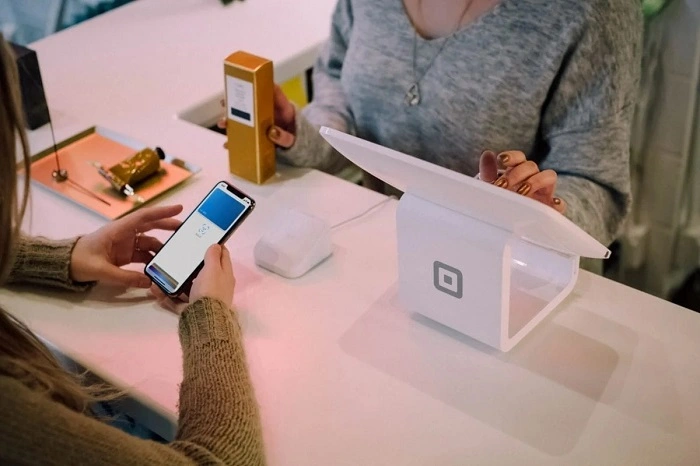However, analytics as a field is still expanding and improving, and these are some basic things from Synodus you need to know about it to drive your business along the future of retail analytics trends.
What is retail analytics?
Retail data analytics is the act of gathering and analyzing retail data (such as sales, inventory, pricing, and so on) in order to identify trends, forecast outcomes, and make better business decisions. When done correctly, data analytics enables retailers to get faster and greater insights into the performance of their stores, products, customers, and vendors –thus making better business increase profitability.
Almost all retailers use data analytics in some way, even if it’s only examining sales figures in Excel. However, there is a significant difference between an analyst using Excel to pour through spreadsheets and employing purpose-built AI to evaluate billions of data points simultaneously.
To know more about the difference between them, there are four types of retail data analytics that you must know about. Each plays an important role in providing today’s retailers with key insights into their business operations.
- Descriptive Analytics – the most common one: helps retailers organize their data to tell a story and uses it to describe “what” is happening in their business.
- Diagnostic Analytics – the simplest form of “advanced” analytics: It enables retailers to use data to answer the “why” of specific business concerns.
- Predictive Analytics – the second most advanced type: It forecasts the future using findings from both descriptive and diagnostic analytics.
- Prescriptive Analytics – the most advanced type: it gives retailers good recommendations to do.
Why is retail analytics important?
To be a more competitive and stable firm, you should know about the importance of retail analytics as below:
More effective sales and marketing strategies
The primary benefit of leveraging retail analytics is that it provides tangible and actionable insights into customer behavior. Managing every part of a business becomes much easier when one understands how to calculate the return on investment (ROI). This is made feasible through retail analytics. Retail analytics provide merchants with a highly accurate picture of what works and what doesn’t, from examining social reactions to a product to measuring how a campaign impacted on the store’s conversion rates.
For example, if you know that a particular in-store display is effective at encouraging customers to purchase a specific item, you can research ways to mimic the results and increase sales.
Alternatively, if you understand what makes your clients stick to the base of behavioral data, you may determine what types of messaging to utilize in your marketing and advertising material.
Optimizing your operations
If you have not implemented this strategy, you may be missing out on future retail analytics that can help enhance your operations and processes.
A good example is shedding light on a store’s peak hours and traffic patterns. The shop may then utilize this information to improve their worker rosters and guarantee that they have the appropriate number of employees on the sales floor at that time to assist and provide the best service for customers. Go along with the labor force implementation, the material organization should follow the best recommendations from retail analytics trends like:
- Install interesting store layouts
- Place product locations that grab the most attention, as well as service delivery quality that makes clients happy
Also, not only the labor force but the storage production should always be tracked to make sure whom to assign, what to arrange, and what is available. Therefore, your operations management will improve as the whole business grows.
Stop wasting money
Using retail analytics in your organization can lead to better resource allocation. You’ll be able to focus more time, energy, and resources on strategies, products, and projects that drive growth rather than those that run out of your resources.
Tracking your analytics on a regular basis also allows you to detect issues and solve them instantly.
If your inventory levels for a popular product are too low, you will miss out on a sale. If you keep too much of a product on hand and it does not sell, you are wasting warehousing resources from other products that could truly move the bottom line.
For instance, TikTok is increasingly changing the way we shop, not only for clothes, and food but everything for sale. As a result, you have to keep up with trends, do statistics and analyze the people’s need for a certain item, and estimate how much they care about it and how willing they are to buy it through the eCommerce platform. You can construct models that estimate your stock needs for the near and long-term using past customer data, seasonality impacts, market trends, and consumer behavior. Then your product would be much optimized in sales.
That’s how you apply retail analytics in a certain aspect for your business, which is an excellent tool for forecasting future demand and optimizing your vendor supply chain to meet the coming demand.
Future of retail analytics (Top 10 trends)
Below are significant retail analytic trends that businesses are using to achieve a competitive advantage in the market.

1. Create more hyper-personalized experiences for a one-to-one market
The ability to track consumer interactions at such a fine level allows management to obtain a far deeper insight into key shopper’s wants and expectations. This means that shops may now provide the unifying experiences that customers expect while communicating distinct offers to highly refined segments. As a result, providing hyper-personalized retail experiences to your customers can increase total sales by increasing loyalty and share-of-wallet.
If you would like to apply the same to your business, your firm should think of having a single data and analytics platform in order to develop and expand this level of personalization.
2. Spending and demand can be predicted
Retail analytics trends are leveraging advanced analytics, which use computers and machine learning to predict trends detected in customer data. These complex computational models inform businesses how much of a certain product or service customers will wish to purchase during a specified time period.
Demand forecasting is being used by business owners to bring their most profitable consumers back into the store through timely notifications and good offers on related products. As a result, businesses can ensure that shipments are timed to get the products their customers desire on the shelves while also optimizing their supply chain.
Retail leaders are applying predictive data analytics to determine each customer’s lifetime value in order to increase retention.
3. Develop automated, dynamic pricing models
To remain competitive, retailers frequently need to maintain a percentage of their prices very low. These low-cost items, known as doorbusters, and key value items (KVIs), are frequently the top sellers and traffic generators that establish a retailer’s price image. As a result, while KVIs can account for up to 80% of revenue, they only account for half of a retail company’s profit. To compensate for the low margin on KVIs, merchants raise the cost of their higher-margin items and strategically put them alongside doorbusters and KVIs in creative ways to encourage buyers to add higher-margin products to their carts.
Retailers can stay in business and grow by optimizing product prices to increase profit margins. With this in mind, dynamic pricing algorithms, in particular, have proven to be game changers for merchants. Dynamic pricing models will offer price suggestions automatically, allowing management to make better informed and timely decisions that benefit the company’s bottom line. To be genuinely effective, we strongly recommend collaborating with a data analytics consulting firm to construct a custom solution tailored to the retail company’s business objectives, operational processes, and client base.
4. Build new experience within the store thanks to the retail analytics trends
Those who use digital technologies in their stores beat their competitors. Indeed, obtaining and analyzing well-chosen data provides retailers with a competitive advantage.
The combination of data from physical store performance and online buyer behaviors can enable merchants to provide innovative services in-store. For example, Uniqlo, a Japanese casual wear designer, manufacturer, and retailer, has launched a click-and-collect service in a number of cities like London, Singapore, making it more convenient for shoppers to collect online orders at a Uniqlo store of choice with no shipping fee and no min. spend required.
Another example is that numerous athletic brands, such as Nike or Adidas, often produce limited-edition collections in a specific store to entice customers to visit. Customers are invited through a database (frequent customers, raffles via social networks, etc.): being invited and visiting the store is perceived as a privilege.
Data methods enable retailers to reconsider their physical shop environments in order to provide more tailored experiences for their customers. To facilitate effective operational action, all data is homogenized and cross-referenced.
Employee performance and comfort are also improved. Shop owners now have access to accurate data and can be more confident in meeting their sales targets. Sales assistants can effectively respond to consumer needs. Your customers will return to your stores if you ensure their contentment and improve their shopping experience. You are providing them with an experience that only pure player stores can provide.
5. Selling online is non-negotiable
Online shopping is important for customers and crucial for retailers. Today, 37 percent of monthly retail purchases are made online, and many businesses are addressing those demands. Independent merchants can interact with customers locally while simultaneously expanding their reach by selling online and retaining a local presence.
Going online can boost the prospects of success as many retailers change their business strategies to pursue new revenue streams. In fact, among shops who sell online, internet sales currently account for 51% of total income. Moving to the first new channel highlights the need to employ digital tools to assist retailers in continuing to innovate.
6. Omnichannel tools are creating more meaningful shopping experiences
Despite the widespread popularity of eCommerce and, as a result, the need of establishing an omnichannel strategy, 32% of retailers believe they are unable to sell things through newer online or social channels because they are unaware of their alternatives. Furthermore, 29 percent feel it is difficult to provide consistent purchasing experiences across online and offline channels.
Even while retailers are digitizing their processes, it is not an all-or-nothing situation, emphasizing the significance of education about the omnichannel selling options available. Shopping patterns are changing, and an integrated solution that connects different channels while reducing front- and back-of-house operations can help stores succeed.
7. Automated technology is helping retailers get a handle on the labor shortage
Almost one-third of retailers are concerned about their ability to attract and retain employees in 2022. To tackle the additional complexity brought on by the manpower shortage, 72 percent of retailers are utilizing or plan to use automation to reduce their team’s time spent on hands-on work.
The top three areas where retailers claim automated technology will help replace workforce deficits are streamlining efficiencies for operations like tracking orders, maintaining customer loyalty programs, and connecting with customers. To satisfy the changing needs of the employment landscape, retailers should consider investing in automated tools or improving what they presently use.
8. Voice search
With digital assistants like Siri, Alexa, and Google Assistant available at the push of a button, it’s no surprise that more and more people are utilizing voice search technologies to simplify everyday activities. Consumers are increasingly depending on information offered by voice search to make purchases, whether it is to locate directions to a store, learn its working hours, or browse product reviews on the way to the merchant.
Retailers who want to take advantage of this AI-based technology must optimize their online presence in the same way that they do SEO for their websites, using natural speech patterns and user intent in their keywords.
9. Extensive reality
The rise of extended reality, which includes both augmented reality (AR) and virtual reality, has been one of the most intriguing advancements in retail technology in recent years (VR).
Retailers can use this technology in a variety of ways. They can assist potential buyers with experienced products in a way that mirrors real life by producing AR and VR experiences for their clients, such as 360 immersive films, which is very handy when purchasing big-ticket items like furniture or gadgets.
AR and VR technology not only allows consumers to see what a specific item might look like in their house, but it also assists businesses by allowing them to visualize in-store layout and stocking as well as evaluate and analyze consumer behavior scenarios.
- Learn the importance of Video Analytics In Retail: The Most Comprehensive Guide
10. Machine learning
Machine learning, a subset of Artificial Intelligence (AI), is the process through which computer-run systems automatically learn and improve based on their experience without the need for additional programming.
This technology is increasingly becoming the go-to solution for companies and merchants trying to stand out from the crowd. One of the most prominent applications of machine learning in retail is in recommendation engines and conversation bots, which “learn” from their operations and improve over time.
Another prominent machine learning-based application is visual search, which allows customers to search an item’s image for characteristics such as brand name and pricing. This can be considered as the most advanced technology to apply to the future of retail analytics.
Conclusion
Retail has always been a data-intensive industry. Hence, in the near future, adopting retail analytics, making the most out of data, and extracting insights from it to make informed business decisions should be the top priorities for any business to compete in a consumer-empowered economy. No matter what you are retailing, you could realize value by adopting data analytics and utilizing critical trends in retail analytics to drive your business growth!
More related posts from Big Data blog you shouldn’t skip:
- 9 Representative Retail Data Analytics Use Cases & Examples
- 4 Major Areas Of Retail Analytics Framework That You Must Notice
How useful was this post?
Click on a star to rate it!
Average rating / 5. Vote count:
No votes so far! Be the first to rate this post.




